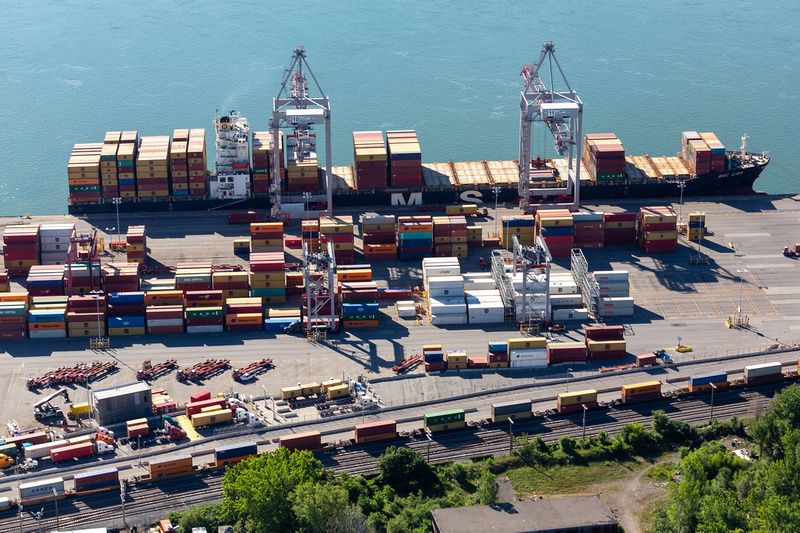
What equipment is needed on container terminals?
When a ship docks, every effort is made to unload the cargo as soon as possible.
What equipment is needed to make this happen, and what is each piece of equipment used for?
There are several stages in the unloading process:
They unload the containers from the ship. With a lifting capacity of more than 60 tonnes, in eight hours they can offload 200 or so containers onto Port tractors. The crane operators manoeuvre the gantry crane to grip the containers with a container spreader, which mechanically locks at all four corners by means of hydraulically activated twistlocks. All lifting equipment is fitted with spreaders to move the containers. Some cranes can pick up two containers at a time, doubling productivity. Shunting tractors are equipped with skeleton trailers, allowing the rapid movement of empty or full containers (20 or 40, 45 or 53 feet) from the terminal to the stacking area and vice versa. Rubber tyred gantry cranes (RTG) and rail mounted gantry crane (RMG) make it possible to stack containers on the terminal and to move over container stacks to pick them up and load them onto trains or trucks. On container cars, two containers can be piled one on top of each other and secured with manual twistlocks. This is known as double-stacking on rail. Reach stackers load them onto a train or truck. Their tilted lift mast makes them easy to spot. Some of the more traditional forklifts have front-end lift-trucks (FELT).
Ship-to-shore gantry cranes
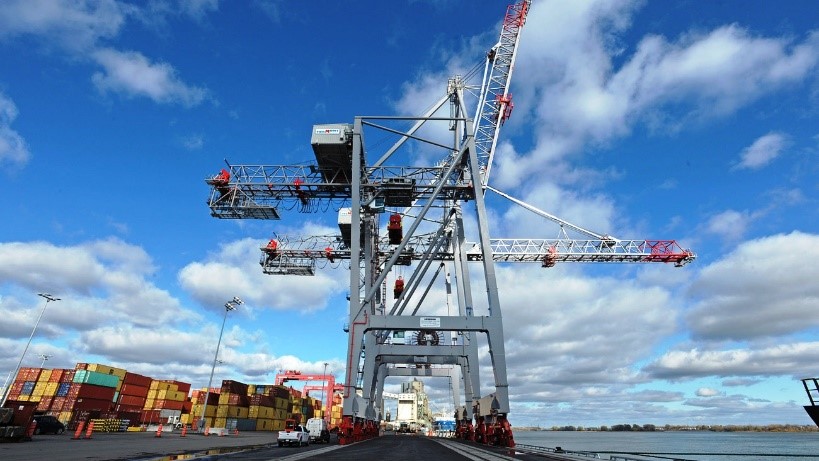
Shunting tractors
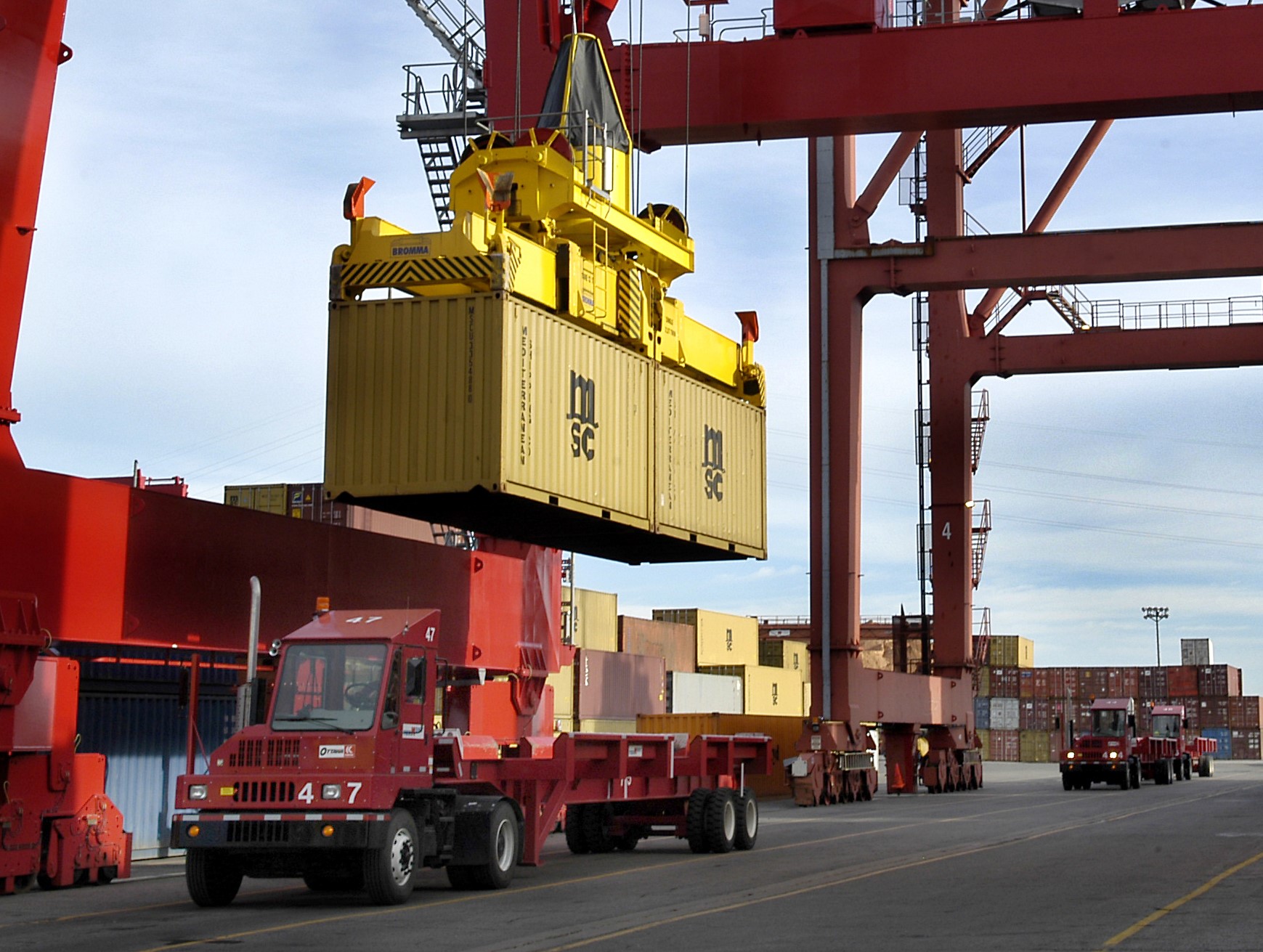
Gantry cranes
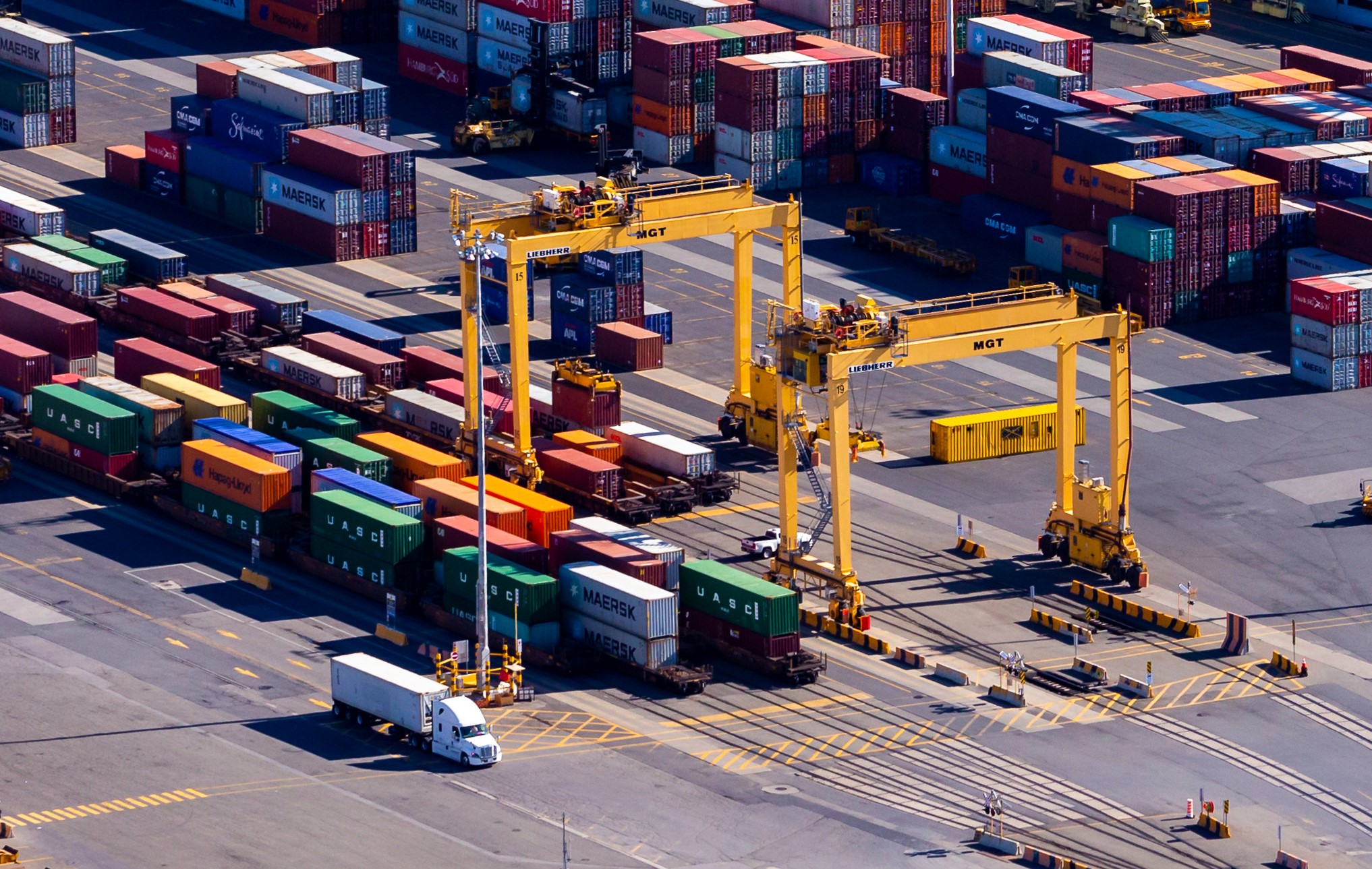
Reach stackers
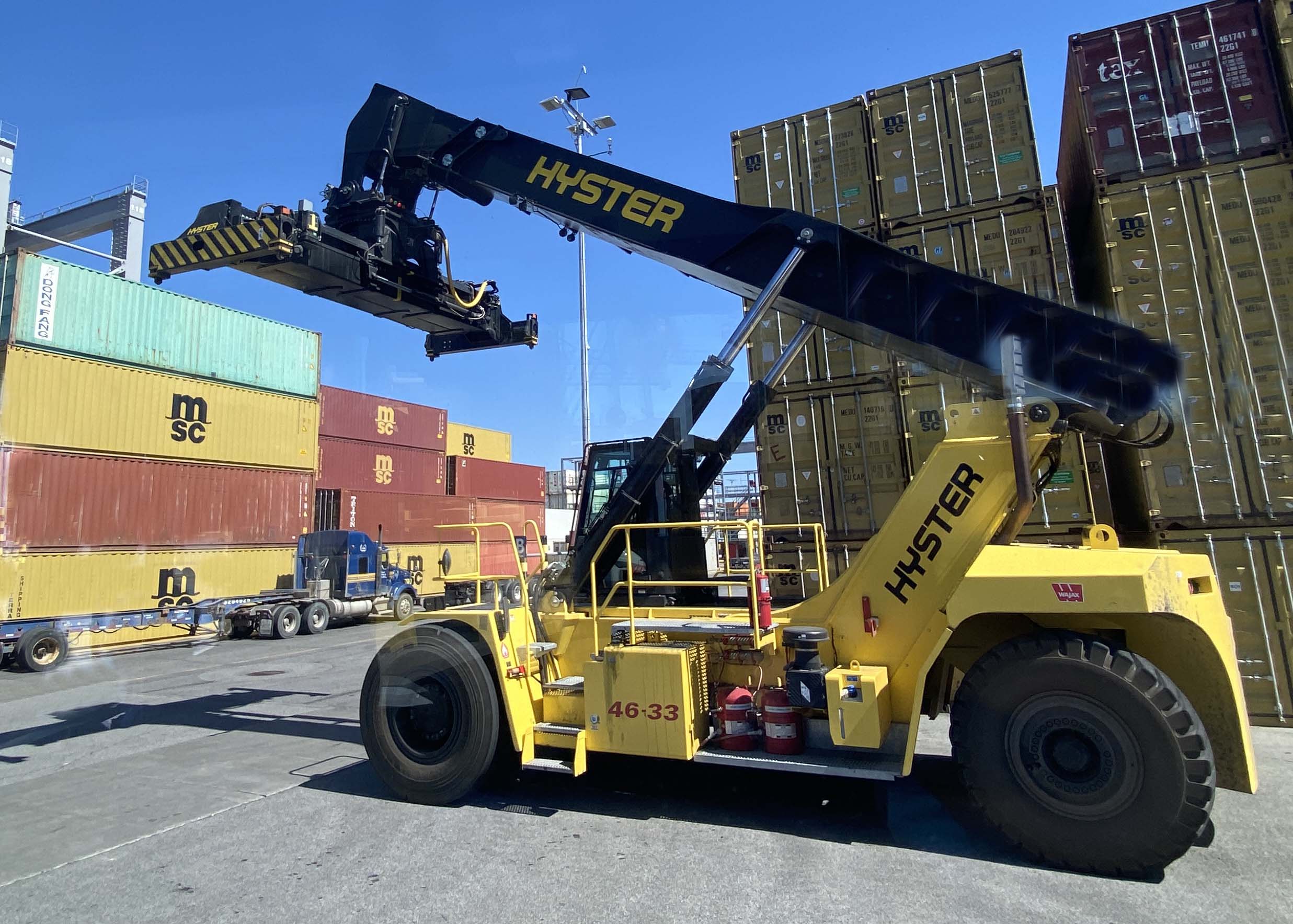
Forklifts
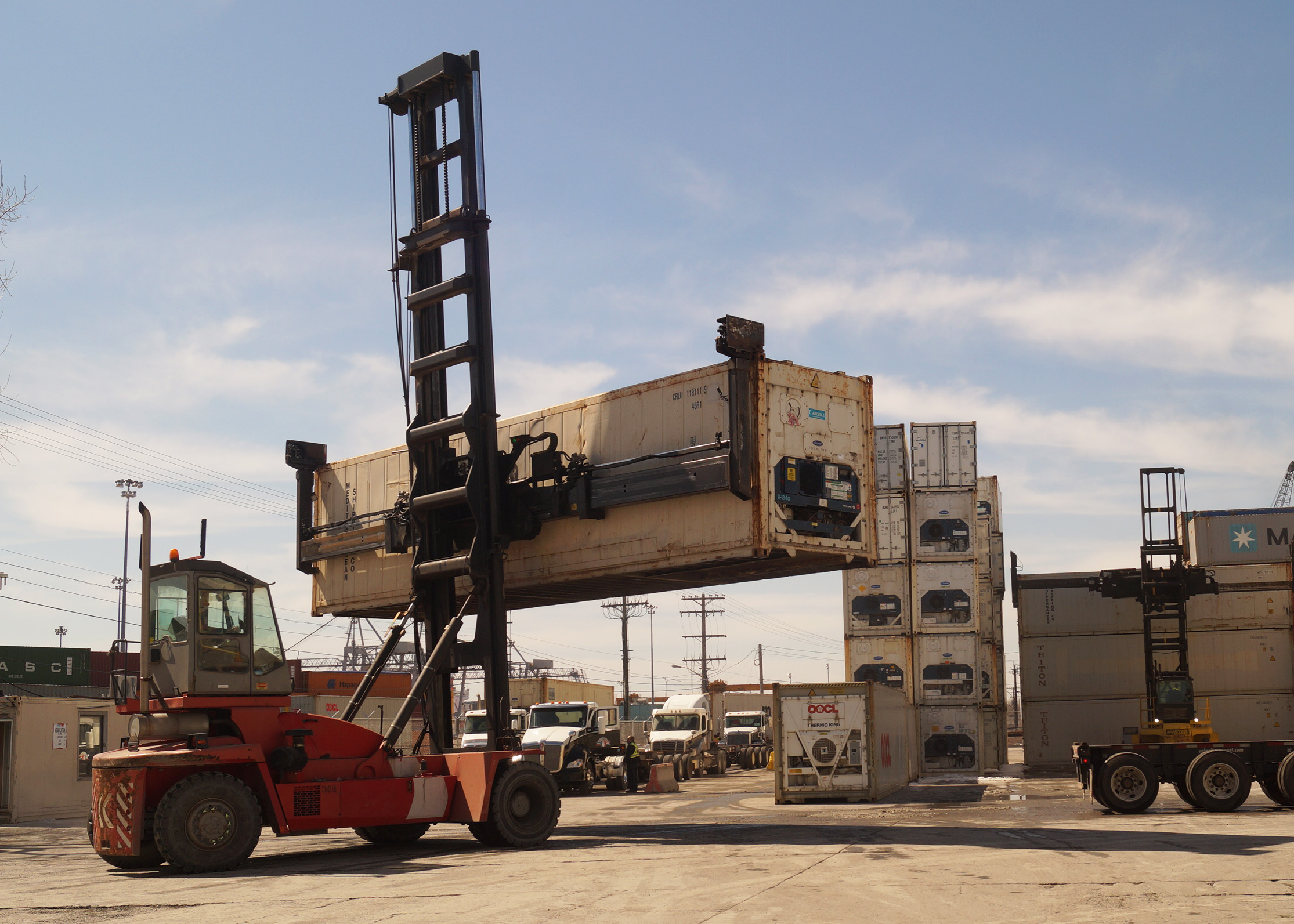
The same equipment is used for reverse operations (to load instead of unload vessels).
If you have a question about the Port of Montreal or its activities, feel free to ask it ! We’ll answer it here with pleasure:
